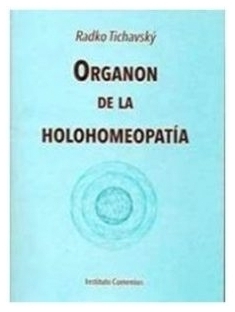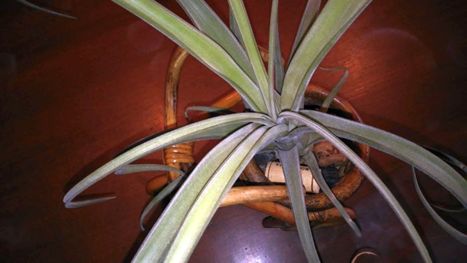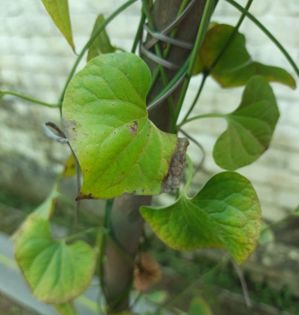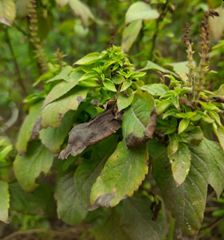Radko Tichavsky is a Czech born Mexican Agrohomeopath. He is a co-founder and director of Instituto Comenius in Mexico and author of Handbook of Agrohomeopathy, 2007 (Spanish) and Homeopathy for Plants, 2009 (Spanish), Organon de la Holohomeopatía and creator and teacher of Holohomeopathy.
He is now offering a one-semester virtual course in Holohomeopathy (in English). You can learn how to define and analyze holons and how to repertorize the specific homeopathic treatment beyond just disease or pest names. You can find out more here: www.icomenius.edu.mx
NEW BOOK: Organon de la Holohomeopatía
Six years in the making, it is the latest book by Radko Tichavsky, researcher on the application of homeopathy in agriculture. This Spanish language book covers homeopathic interventions in agriculture from the holistic view, allowing greater certainty in repertorizations. It addresses a novel concept of metabolic similarity, not only among plants, but also among different species of the animal and plant kingdom. It studies the formation and dynamics of attractors, areas of greater vitality within the holons and coexistence units of different living organisms Holohomeopathy is a fascinating contribution to the application of homeopathy to plants. It allows one to discover a universe of surprising relations in vital dynamism. It puts into the hands of the agricultural producer, a valuable tool for the successful handling of pests and diseases in crops of any size. For ordering or information: [email protected]
Dear Professor Tichavsky,
I have read all of your columns on cochineal over the past few years. I ask you if for the Tillandsias, of the Bromeliads family, the same intervention is indicated, type Schinus molle 3JT, due to both “floury” and “black pepper” cochineal. Idem for aphids. As always, thank you for your valuable advice.
Roberto Migliorelli
Radko Tichavsky:
Dear Roberto,
Nitrogen deficiency in Tilandsia sp. causes the presence of cochineals. In fact the plant calls them metabolically to take advantage of the infection of an endophytic nitrogen-fixing bacterium Dactylopiibacterium (Betaproteobacterium, family Rhodocyclaceae) and a large group of N-fixing bacteria of Firmicutes phyllum.
This symbiont can compensate the nitrogen deficiency in the diet of cochineals and also in the plant. In addition, this symbiont can provide essential amino acids, recycle uric acid and increase the growth of Tilandsia spp.
Bacillus licheniformis, B. subtilis, B. megatherium and B. brevis constitute the most significant group because they are present in 75% of the species of Tilandsia. Bacillus polymyxa, B. circulans, B.azotofixans, Pseudomonas spp. Rahnella acquatica, Vibrio fluvialis, Aeromonas hidrophyla (depending on the species of Tilandsia) are the other bacteria that may be present that meet the same criteria, i.e., they fix nitrogen and produce growth hormones in the plant or in the roots and even in the leaves.
You can find the basic set of bacteria in Aloe vera gel, and prepare live bionode from it at 3 JT potency and apply them to the soil and leaves.
If you want to take the pressure off the mealybug you can apply just once, the Schinus molle 3JT with a little soap as an adjuvant.
But the important thing is to solve the origin of its presence on the plant, which is the lack of nitrogen.
Dear Dr. Tichavsky,
We have a small farm in Jasper, Arkansas (U.S.) (zipcode 72641) We have a humid sub-tropical climate that includes hot, humid summers and mild, slightly drier winters. We planted potatoes this past summer and had a problem with the common scab. I looked it up and found that it’s caused by three bacteria Streptomyces: S. scabies, S. acidiscabies, and S. turgidiscabies. Can you make any recommendations?
Thank you
Marvin Dawson
Radko Tichavsky:
Hi Marvin,
Microbial communities in soil are fundamental for the balanced functioning of ecosystems. Microorganisms through mVOC (microbial volatile organic compounds) attract other microorganisms that act in beneficial association playing a crucial role in disease suppression, plant growth promotion, plant immunization and induced stress resistance and tolerance.
Root exudates control the composition of the microbial community in the rhizosphere and form beneficial associations with other microbial populations that act as antagonists to suppress pathogenic organisms through biofilm formation. In this case, the presence of Streptomyces sp. in the crop indicates a devitalized soil, i.e., there is a lack of microorganisms that are beneficially associated with the crop.
Streptomyces spp. are Gram positive bacteria, belonging to the Phylum Actinobacteria that form pseudomycelia with a complex multicellular life cycle and spread by sporulation. They can survive indefinitely in their vegetative mycelial or spore form in most soils.
The pathogen is spread by soil and water and penetrates tissues through lenticels, wounds and stomata of young tubers. The severity of scab infection increases with increasing soil pH from 5.0 to 8.0. The incidence of potato scab is low in moist soils. Other Streptomyces associated with scab include Streptomyces clavifer, Streptomyces fimbriatus, Streptomyces carnosus, Streptomyces craterifer, Streptomyces poolensis, and Streptomyces intermedius.
The spatial distribution of Streptomyces sp. in soils is mainly driven by soil physicochemical characteristics and geographical descriptors, including latitude. Interactions between physicochemistry and land use pattern also have a significant effect.
Actinobacteria stimulate their development, mainly in acid prairie soils, rich in clays and recalcitrant organic matter, regardless of climate, with a pH between 6 and 9 (some acidophilic strains pH 3.5). Climate does not influence the distribution of Actinobacteria.
Streptomyces antagonistic microorganisms are bacteria belonging to the fillum Gammaproteobacteria (Pseudomonas sp., Pseudomonas fluorescens, Pseudomonas rhodesiae) that prefer neutral and alkaline soils and, more specifically, in forest soils and are found on Triticum aestivum, Oryza sativa, Zea mays, Panax ginseng.
Gammaproteobacteria interact closely with growth-promoting Acidobacteria and Alphaproteobacteria (PGPR) and their development is stimulated in acid soils. Almost all Gammaproteobacteria show biocontrol activities against Streptomyces scabies and in association with Paenibacillus sp. found on Oryza sativa, Triticum aestivum, Citrus limon, Zea mays, Panax ginseng, Carica papaya and Pinus sp. acting against different pathogens.
Because Streptomyces is a Gram-positive bacterium, that is, it has an internal cell wall and a peptidoglycan wall, compared to the negative ones that have a more complete cell wall, with an external membrane, you can elaborate a remedy based on Latex exudate of Carica papaya that contains the antimicrobial enzyme Lysosyme, which has the ability to break the cell wall. Make a mother tincture of Carica papaya latex in 30% alcohol, let it sit for a week and bring it to 3JT potency and apply it to your crop.
You you can also elaborate a live bionosode with the above mentioned plants, containing the bacteria (Gammaproteobacteria and Paenibacillus sp.), the root of Zea mays or the root of Panax ginseng or the fruit and latex of Carica papaya (plants with greater metabolic similarity).
Disinfect the surface with 30% alcohol, rinse with tap water, cook rice, let it cool and you can liquefy any of the plants mentioned above, with a little tap water and leave it at room temperature for a day, then dilute this liquid in a ratio of 1:100 and perform 500 vigorous succussions (if the volume is large then 500 turns with a wooden stick to the right and 500 to the left) and apply as a spray on the crops.
The antagonistic bacteria will replicate in your preparation and will also attract other microorganisms with which they associate, helping in the bioavailability of nutrients and control of pathogens in the soil and therefore in your crop.
Hello Prof. Tichavsky,
In our asparagus plants we found what turned out to be the common asparagus beetle. They are about half an inch long with whitish spots. They had a huge appetite and we eventually gave up on the crop. It would have taken some serious chemicals to fix the problem. Our home and garden is at Oxfordshire in the UK. We get rather short summers and it’s often partly cloudy. The winters are long, very cold, windy, and mostly cloudy. Over the course of the year, the temperatures in the planting season can get up to 80F. The average rainfall is 660 mm, falling on an average of 165 days per year. (mailing code OX1 IDA)
Thank you
Brian Roberts
Radko Tichavsky:
Dear Brian,
It is probably the common asparagus beetle Crioceris asparagi, rather than the adult. The most voracious are the larvae, and they can be eliminated with one or two applications of Azadirachta indica 4 JT. Adults can be controlled with applications of Larrea tridentata 6 JT with a little olive oil as an adjuvant (about every 20:l of homeopathic preparation. Add 20 ml of extra virgin olive oil). Steinernema feltiae, a parasitic nematode can also be used, and that can quickly control more than 90% of the beetle larvae population and once inoculated in the soil, the plants are protected also in the future.
———————————
Dear Teresa,
Strawberries are a crop that grows naturally in coexistence with various trees, specifically pine trees. Pines connect with the root system of strawberries taking from them Boron, an element of which strawberries are hyperaccumulator. And in return the Pinus provide the strawberry plant with polyterpenes and some other antifungal substances.
Although strawberries contain 17 fungicides, Pinus silvestris contains 30 very potent fungicides making it an ideal companion formula for strawberries. Pine also contains endophytic fungi such as Hormonema dematioides and Rhodotorula minuta and also contains many species of Pseudomonas sp. and Methylobacteria sp. (which are the main antagonists of Verticilium sp.).
One of the your first actions have to be to place enough leaves of any pine tree specie around the strawberry plants to ensure inoculation of some beneficial bacteria that control the pathogenic fungus Verticilium sp.
The second action is to prepare a mother tincture of pine resin and dynamize it at 6 JT potency. The remedy is applied in water by spray, usually once a week or every ten days is enough to keep strawberries out of the reach of Verticilium sp. and Botrytis sp. two headaches of strawberry growers.
Be sure to install a drip irrigation system, or if you water manually, try not to wet the leaves and fruits. Placing black plastic sheeting on the soil is a good measure to keep the fruits and leaves away from direct contact with the soil and not allow the spread of Verticilium sp. spores.
In this case returning the strawberry to the connection with its Pinus sp. partner and its metabolites and endobionts, returns the strawberry to a healthy state without any problems.
—————————————
Dear Guru Charan,
As far as it can be seen from the satellite data, all vegetation in your area has been under water stress for the past few months. The chart below shows moisture index (it reflects vegetation water content) for Roorkee area, where values below 0.4 correspond to water stress, last rain being around Nov.24, 2020 – the fifth consecutive month of water stress.
The 82% decline of groundwater in the area is also a problem (water table drop of more than 20 m in three decades).
Do you water your plants? Due to the rapid increase of built-up area in your town and the location of waste disposal site upstream of the aquifer that supplies its water, the quality of water (contaminants?minerals?) might be the problem. All details need to be taken into account to elaborate good strategy for all of your plants; observation of arbaceous, or spontaneous plants in the holon helps understand how holon is trying to remedy itself. While attempts to treat each plant individually just shift the problem from place to place causing different issues – just like the side effects of medications prescribed for each organ separately. Finally, the patient in holohomeopathy is the holon and not a separate plant. The health of individual plants is the result of the health of the holon.
Piper longum is comparatively robust plant resistant to pathogens, and harbours a variety of endophytes. Bacteria: Enterobacter Sp., Alishewanella Sp., Bacillus Sp. Diversity of P.longum fungal symbionts gives it resistance to pathogens and stress and better nutrition: Pestalotiopsis, Fusarium, Colletotrichum, Curvularia, Dreshera, Mucor, Penicillum, Pithomyces, Sordaria, Arthobotrys, Arthrinium, Cladosporium, Aspergillus, Bipolaris, Trichoderma. Phomopsis heveicola endophyte is considered an “epigenetic modifier” driving higher production of bioactive compounds by P.longum, and is used as biocontrol against R.solani, Phytophtora infestans, Pyricularia oryzae, Botrytis cinerea, Puccinia recondite. Even the alkaloid piperine (which makes the pungent taste of pepper spice) is the product of its endophytic Periconia Sp.
If variety of endophytes decreases, plant is weakened. It would be best to apply both arbuscular mycorrhizal fungi (VAM) and Trichoderma viridae or T.harzianum (promote root growth, compete with pathogenic fungi, favor the access of AMF to plant roots.) VAM fungi have also the ability to bioavailable phosphorus to plants, produce growth hormones and increase their resistance to prolonged drought conditions.You can obtain those from the rhizosphere soil of one of the following plants: Citrus limon (14 common metabolites), Eucalyptus citriodora (8), E.botryoides (2), or from the buried (not just fallen) needles of Abies albaI. Quercus Sp. also an option even though they have no common metabolites, but a very diverse fungal biomes, as long as you find one in proximity of your holon. Qercus and Eucalyptus have both ectomycorrhizal and AMF fungi. Collect the top 10-15 cm of soil, mix well with clean non-chlorinated water, add some unflavored carbonated water, strain and proceed with making 3JT dynamization which you apply around your P.longum plant.
If the soil is dry, and there is little shade, it is important to apply preparation of Opuntia ficus indica, so that plants better conserve water, and soil has enough for beneficial microorganisms to establish. Take a cladode, cut it up and mix with water, let sit for a day, strain, dissolve in water 1:100, dynamize with 500right/left turns with a wooden stick, and apply to the soil. Complementary bacteria can be applied in the form of live bionosode made from Aloe vera gel.
I want to state once more that all recipes have to take into account the complex interconnection between the organisms in the holon. For instance, Trichoderma Sp. are antagonistic to the fungi that higher termites use for their “gardens”, but can attract O.formosanus termites and even protect them from their pathogen Metarrhizium anizopliae.
The Ocimum gratissimum plant also needs supplementation with friendly bacteria and fungi. It might have a fungal or bacterial leaf spot, or mildew, though on the picture it looks very dry. When healthy, O.gratissimum has many bacterial endophytes and is intensely colonized by mycorrhizae. Live bionosode of Glomus intraradices and Glomus aggregatum will improve nutrition and growth of O. gratissimum. G.intraradices can be obtained from the top soil around mature Qercus or E.citriodora (29 com. metab) trees. G. aggregatum – from the roots of Pelargonium graveolens (24 common metabolites), Cymbopogon martini or C.citratus(13), Plantago aciatica (2).
Live bionosode of Aloe vera (preparation described in previous issues) will help establish community of PGPR -bacteria complementary to the VAM fungi, which will increase resistance of plant to abiotic stress and resolve nutritional deficiencies.
Dear Mr. Tichavsky,
We experimented with growing strawberries here in Campania, Italy. At some point they developed Verticillium wilt and we lost that batch. My husband and the children love strawberries (I’m allergic myself) so we’ll try again in the spring. Is there a way to avoid this fungal disease? The temperature here goes up to 30 C in August. Annual rainfall is 861 mm. The mailing code is 84022.
Thank you
Theresa
Radko Tichavsky:
Dear Teresa,
Strawberries are a crop that grows naturally in coexistence with various trees, specifically pine trees. Pines connect with the root system of strawberries taking from them Boron, an element of which strawberries are a hyperaccumulator. And in return, the Pinus provides the strawberry plant with polyterpenes and some other antifungal substances.
Although strawberries contain 17 fungicides, Pinus silvestris contains 30 very potent fungicides making it an ideal companion formula for strawberries. Pine also contains endophytic fungi such as Hormonema dematioides and Rhodotorula minuta and also contains many species of Pseudomonas sp. and Methylobacteria sp. (which are the main antagonists of Verticilium sp.).
One of your first actions have to be to place enough leaves of any pine tree specie around the strawberry plants to ensure inoculation of some beneficial bacteria that control the pathogenic fungus Verticilium sp.
The second action is to prepare a mother tincture of pine resin and dynamize it at 6 JT potency. The remedy is applied in water by spray. Usually once a week or every ten days is enough to keep strawberries out of the reach of Verticilium sp. and Botrytis sp., two headaches of strawberry growers.
Be sure to install a drip irrigation system, or if you water manually, try not to wet the leaves and fruits. Placing black plastic sheeting on the soil is a good measure to keep the fruits and leaves away from direct contact with the soil and not allow the spread of Verticilium sp. spores.
In this case returning the strawberry to the connection with its Pinus sp. partner and its metabolites and endobionts, returns the strawberry to a healthy state without any problems.
Dear Doctor,
I have 2 issues:
This 6 month old Long pepper/Piper longum plant has slow growth and hardly any fruit. Also, the leaves don’t look healthy.
Piper longum
My clove basil plant is unhealthy for the last 4 to 5 months. Its leaves seem to be browning.
Clove basil
I live in Roorkee, Uttarakhand, India and the temperature here currently is : Max 21C , Min 7 C. Humidity is 82%. Mailing code: 247667
Best Regards,
Gurucharan
Radko Tichavsky:
Dear Guru Charan,
As far as can be seen from the satellite data, all vegetation in your area has been under water stress for the past few months. The chart below shows moisture index (it reflects vegetation water content) for Roorkee area, where values below 0.4 correspond to water stress, last rain being around Nov.24, 2020 – the fifth consecutive month of water stress. The 82% decline of groundwater in the area is also a problem (water table drop of more than 20 m in three decades).
Do you water your plants? Due to the rapid increase of built-up area in your town and the location of waste disposal site upstream of the aquifer that supplies its water, the quality of water (contaminants? minerals?) might be the problem.
All details need to be taken into account to elaborate a good strategy for all of your plants; observation of arbaceous, or spontaneous plants in the holon helps understand how the holon is trying to remedy itself.
Attempts to treat each plant individually just shift the problem from place to place causing different issues – just like the side effects of medications prescribed for each organ separately. In the end, the patient in holohomeopathy is the holon and not a separate plant. The health of individual plants is the result of the health of the holon.
Piper longum is a comparatively robust plant resistant to pathogens, and it harbours a variety of endophytes. Bacteria: Enterobacter Sp., Alishewanella Sp., Bacillus Sp. Diversity of P.longum fungal symbionts gives it resistance to pathogens and stress and better nutrition: Pestalotiopsis, Fusarium, Colletotrichum, Curvularia, Dreshera, Mucor, Penicillum, Pithomyces, Sordaria, Arthobotrys, Arthrinium, Cladosporium, Aspergillus, Bipolaris, Trichoderma. Phomopsis heveicola endophyte is considered an “epigenetic modifier” driving higher production of bioactive compounds by P.longum, and is used as biocontrol against R.solani, Phytophtora infestans, Pyricularia oryzae, Botrytis cinerea, Puccinia recondite. Even the alkaloid piperine (which makes the pungent taste of pepper spice) is the product of its endophytic Periconia Sp.
If variety of endophytes decreases, the plant is weakened. It would be best to apply both arbuscular mycorrhizal fungi (VAM) and Trichoderma viridae or T.harzianum (promotes root growth, competes with pathogenic fungi, favors the access of AMF to plant roots.)
VAM fungi have also the ability to make phosphorus bioavailable to plants, produce growth hormones and increase their resistance to prolonged drought conditions. You can obtain those from the rhizosphere soil of one of the following plants: Citrus limon (14 common metabolites), Eucalyptus citriodora (8), E.botryoides (2), or from the buried (not just fallen) needles of Abies albaI. Quercus Sp. also an option even though they have no common metabolites, but a very diverse fungal biome, as long as you find one in proximity of your holon. Qercus and Eucalyptus have both ectomycorrhizal and AMF fungi.
Collect the top 10-15 cm of soil, mix well with clean non-chlorinated water, add some unflavored carbonated water, strain and proceed with making 3JT dynamization which you apply around your P.longum plant.
If the soil is dry, and there is little shade, it is important to apply a preparation of Opuntia ficus indica, so that plants better conserve water, and the soil has enough for beneficial microorganisms to establish.
Take a cladode, cut it up and mix with water; let sit for a day, strain, dissolve in water 1:100, dynamize with 500 right/left turns with a wooden stick, and apply to the soil. Complementary bacteria can be applied in the form of live bionosode made from Aloe vera gel.
I want to state once more that all recipes have to take into account the complex interconnection between the organisms in the holon. For instance, Trichoderma Sp. are antagonistic to the fungi that higher termites use for their “gardens”, but can attract O.formosanus termites and even protect them from their pathogen Metarrhizium anizopliae.
The Ocimum gratissimum plant also needs supplementation with friendly bacteria and fungi. It might have a fungal or bacterial leaf spot, or mildew, though on the picture it looks very dry. When healthy, O.gratissimum has many bacterial endophytes and is intensely colonized by mycorrhizae.
Live bionosode of Glomus intraradices and Glomus aggregatum will improve nutrition and growth of O. gratissimum. G.intraradices can be obtained from the top soil around mature Qercus or E.citriodora (29 com. metab) trees. G. aggregatum – from the roots of Pelargonium graveolens (24 common metabolites), Cymbopogon martini or C.citratus(13), Plantago aciatica (2).
Live bionosode of Aloe vera (preparation described in previous issues) will help establish a community of PGPR bacteria complementary to the VAM fungi, which will increase resistance of the plant to abiotic stress and resolve nutritional deficiencies.









